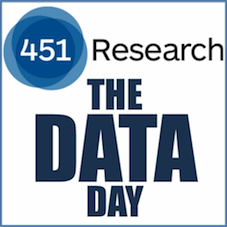On Tuesday, November 13 at 12pm ET I’ll be taking part in a webinar in association with ScaleBase on the subject of Choosing a Next-Gen Database: The new world order of NoSQL, NewSQL & MySQL.
With the database market becoming increasing complex and changing on an almost daily basis, I’ll be providing an overview of this ever-changing market: discussing the benefits and drawbacks of NoSQL, NewSQL & MySQL databases and exploring real-life use cases for each.
Joining me will be Doron Levari and Paul Campaniello, both from ScaleBase, who will be discussing specific use cases of ScaleBase’s Data Traffic Manager, which is designed to enable next generation applications that require big data transactional processing, without changing the existing infrastructure.
For full details, and to register for the event, click here.
Teradata launches Aster/Hadoop appliance. SAP takes HANA to the cloud.
And that’s the Data Day, today.
Oracle updates Database, Exadata. BigQuery adds REST support. And more.
And that’s the Data Day, today.
Yesterday The 451 Group published a report asking “How will the database incumbents respond to NoSQL and NewSQL?”
That prompted the pertinent question, “What do you mean by ‘NewSQL’?”
Since we are about to publish a report describing our view of the emerging database landscape, including NoSQL, NewSQL and beyond (now available), it probably is a good time to define what we mean by NewSQL (I haven’t mentioned the various NoSQL projects in this post, but they are covered extensively in the report. More on them another day).
“NewSQL” is our shorthand for the various new scalable/high performance SQL database vendors. We have previously referred to these products as ‘ScalableSQL’ to differentiate them from the incumbent relational database products. Since this implies horizontal scalability, which is not necessarily a feature of all the products, we adopted the term ‘NewSQL’ in the new report.
And to clarify, like NoSQL, NewSQL is not to be taken too literally: the new thing about the NewSQL vendors is the vendor, not the SQL.
So who would be consider to be the NewSQL vendors? Like NoSQL, NewSQL is used to describe a loosely-affiliated group of companies (ScaleBase has done a good job of identifying, some of the several NewSQL sub-types) but what they have in common is the development of new relational database products and services designed to bring the benefits of the relational model to distributed architectures, or to improve the performance of relational databases to the extent that horizontal scalability is no longer a necessity.
In the first group we would include (in no particular order) Clustrix, GenieDB, ScalArc, Schooner, VoltDB, RethinkDB, ScaleDB, Akiban, CodeFutures, ScaleBase, Translattice, and NimbusDB, as well as Drizzle, MySQL Cluster with NDB, and MySQL with HandlerSocket. The latter group includes Tokutek and JustOne DB. The associated “NewSQL-as-a-service” category includes Amazon Relational Database Service, Microsoft SQL Azure, Xeround, Database.com and FathomDB.
(Links provide access to 451 Group coverage for clients. Non-clients can also apply for trial access).
Clearly there is the potential for overlap with NoSQL. It remains to be seen whether RethinkDB will be delivered as a NoSQL key value store for memcached or a “NewSQL” storage engine for MySQL, for example. While at least one of the vendors listed above is planning to enable the use of its database as a schema-less store, we also expect to see support for SQL queries added to some NoSQL databases. We are also sure that Citrusleaf won’t be the last NoSQL vendor to claim support for ACID transactions.
NewSQL is not about attempting to re-define the database market using our own term, but it is useful to broadly categorize the various emerging database products at this particular point in time.
Another clarification: ReadWriteWeb has picked up on this post and reported on the “NewSQL Movement”. I don’t think there is a movement in that sense that we saw the various NoSQL projects/vendors come together under the NoSQL umbrella with a common purpose. Perhaps the NewSQL players will do so (VoltDB and NimbusDB have reacted positively to the term, and Tokutek has become the first that I am aware of to explicitly describe its technology as NewSQL). As Derek Stainer notes, however: ” In the end it’s just a name, a way to categorize a group of similar solutions.”
In the meantime, we have already noted the beginning for the end of NoSQL, and the lines are blurring to the point where we expect the terms NoSQL and NewSQL will become irrelevant as the focus turns to specific use cases.
The identification of specific adoption drivers and use cases is the focus of our forthcoming long-form report on NoSQL, NewSQL and beyond, from which the 451 Group reported cited above is excerpted.
The report contains an overview of the roots of NoSQL and profiles of the major NoSQL projects and vendors, as well as analysis of the drivers behind the development and adoption of NoSQL and NewSQL databases, the evolving role of data grid technologies, and associated use cases.
It will be available very soon from the Information Management and CAOS practices and we will also publish more details of the key drivers as we see them and our view of the current database landscape here.


 Subscribe via RSS
Subscribe via RSS